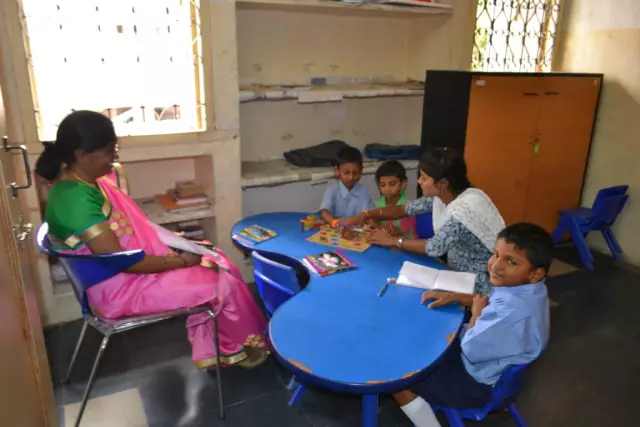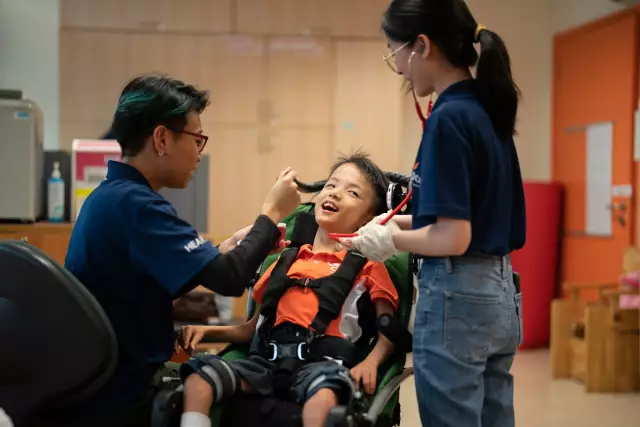- Author Rachel Wainwright [email protected].
- Public 2023-12-15 07:39.
- Last modified 2025-11-02 20:14.
Rehabilitation of children with cerebral palsy

The group of chronic non-progressive symptom complexes of motor disorders that arises in the perinatal period, which are secondary to lesions and anomalies of the brain, is called the general term "Cerebral palsy" (cerebral palsy). By its nature, cerebral palsy is not a hereditary disease; the cause of its occurrence is pathology in the subcortical regions, cortex, capsules and brain stem. The main difference between cerebral palsy and other types of paralysis is the time of onset, because this ailment can manifest itself both during pregnancy and childbirth, and after the birth of a child, and in the period up to 3 years.
Today, advanced rehabilitation centers for children with cerebral palsy are located mainly in China, where stem cells are used for treatment, Thailand and South Korea.
Symptoms may worsen over time, but Cerebral Palsy itself is not a progressive disease. Basically, children with cerebral palsy have disturbances in the functioning of the central parts of the brain, which are responsible for the functioning of motor functions, which causes problems with posture, movements and muscle tone.
Rehabilitation of children with cerebral palsy is a laborious process in which a highly qualified doctor must participate, and centers specializing in the treatment of this ailment must be equipped with special medical equipment.
There is a direct relationship between the development of the child's nervous and musculoskeletal system with the progression and manifestation of symptoms of the disease. Also, the symptomatology is influenced by the degree of initial brain damage and the quality of rehabilitation of children with cerebral palsy, which was used in the first years of life.
Rehabilitation centers for children with cerebral palsy
Unfortunately, these days no specific cure for cerebral palsy has been developed, but it is possible to improve the quality of life of a child and reduce the severity of symptoms. This is what the rehabilitation centers for children with cerebral palsy, located in different countries, are doing. The experience gained in the field of cerebral palsy treatment over the past decades has enabled doctors to achieve successful results.
Basically, in such centers, rehabilitation is carried out through occupational therapy, surgery, physiotherapy, medication, traditional Chinese medicine and cell therapy. Also known are the centers that use dolphin therapy for the rehabilitation of children with cerebral palsy. Regular communication with dolphins under the supervision of specialists and with the right approach has a positive effect on the development of sick children.
Social rehabilitation of children with cerebral palsy
For any child, the process of social adaptation is at first a great stress, especially in cases where the crumbs' social circle consisted exclusively of family members. Social rehabilitation of children with cerebral palsy is a difficult task for both parents and employees of specialized kindergartens, schools, boarding schools and technical schools.
The program of social adaptation of children with cerebral palsy in such institutions should include:
- Social and cultural rehabilitation;
- Social and household adaptation;
- Teaching social behavior;
- Labor rehabilitation;
- Individual rehabilitation.
The process of rehabilitation of children with cerebral palsy should begin immediately after birth and continue continuously as they move from lower specialized educational institutions to higher ones.
Children with cerebral palsy differ from their peers in increased excitability, anxiety, lack of initiative, excessive sensitivity, passivity and excessive disinhibition. That is why employees of institutions where children with cerebral palsy are trained should have general and specialized education, extensive pedagogical and speech therapy practice, they should be able to provide psychological and medical assistance. Only such employees can provide the most complete social rehabilitation of children with cerebral palsy.
An important point is the development in such children of a positive attitude towards family, society, people, work, education and life in general. Correctional and pedagogical work with children suffering from cerebral palsy should be extensive and complex, develop all aspects of their psyche, speech and motor skills, as well as prevent and correct existing violations.
Early diagnosis of the disease is of great importance for the further rehabilitation of children with cerebral palsy. The sooner the specialists start working with the child, the greater the chance to prevent, and not to correct subsequently, the delayed reaction of parents, deviations of speech and psyche. In general, the social adaptation of children with cerebral palsy and the correctional work of specialists should be based not on the child's age, but depending on what stage of psycho-speech development he is at.
Physical rehabilitation, the ability to master various work skills, creative development, communication with peers, play activities, as well as close interaction of his parents with the entire environment in the institution are no less important for the development of the child.
The main tasks of educational and pedagogical work with children with cerebral palsy are as follows:
- Expanding the stock of knowledge and ideas about the world of the wards;
- Hygienic education;
- Formation of mathematical concepts;
- Development of thinking, memory and attention;
- Development of their verbal communication with their peers and adults;
- Development of fine motor skills, sensory functions, kinesthetic perception and stereognosis;
- Developing self-service skills.
A properly established process of teaching children with cerebral palsy has a positive effect on their ability to organize and regulate their activities, mental and physical development, and also helps to master the skills of social and labor orientation.
Physical rehabilitation of children with cerebral palsy
Physical development is of great importance for maintaining a more or less normal lifestyle for a child with cerebral palsy. Correctly organized labor activity has a beneficial effect on the physical condition of even deeply retarded children, contributes to the correction and development of their motor skills.
Physical rehabilitation of children with cerebral palsy should be phased and implement the following tasks:
-

The essence of social rehabilitation of children with cerebral palsy Develop tactile perception;
- Develop coordination of movements;
- Develop gross and fine motor skills;
- Develop the ability to voluntarily relax the respiratory and skeletal muscles.
Having determined the degree of the child's physical development, the rehabilitation doctor selects the optimal treatment carried out through physiotherapy exercises, using special orthopedic devices, games that motivate the child to use his physical capabilities, massage and swimming, which strengthens his muscles. For each child, an individual treatment plan is worked out, aimed at both developing motor skills and correcting existing deficiencies.
Rehabilitation of children with cerebral palsy is a complex and multi-stage process, the participants of which must be highly qualified specialists working in close relationship with parents and close circle of sick children.
Found a mistake in the text? Select it and press Ctrl + Enter.






